Fashions of 1934

Brief Synopsis
Cast & Crew
William Dieterle
William Powell
Bette Davis
Frank Mchugh
Hugh Herbert
Verree Teasdale
Film Details
Technical Specs

Synopsis
Just as Sherwood Nash's New York investment business goes broke, he meets dress designer Lynn Mason. Her drawings give him the idea for a new racket, and soon he, Lynn and his partner Snap are in business providing dress shops with cheap copies of exclusive Paris designs. When the owners of the more expensive shops discover his scam, Sherwood suggests that they send him to Paris to make copies of the European designs for them. Secretly, each owner agrees and Sherwood and his partners are in business. The designs are closely guarded, however, and Lynn does not succeed in copying any of them until they learn by accident that Oscar Baroque, one of the top couturiers, gets his ideas from old costume books. Lynn invents her own designs in the same way, and she and Sherwood sign each drawing with the name of a big designer, selling them to their contented New York customers. Sherwood expands his goals when he meets Joe Ward, an ostrich feather salesman with a surplus he can't sell. He recognizes Baroque's companion, the Grand Duchess Alix, as Mabel, a friend of his from Hoboken, New Jersey. Threatening to tell Baroque the truth about her background, Sherwood suggests that she convince Baroque to back and design the costumes of a musical revue in which she will star. Baroque buys Ward's entire supply of ostrich feathers, starting a rage for the product. Lynn is sure that it is just a matter of time until the police catch up with Sherwood. Although she has fallen in love with him, she is so tired of his schemes that she considers leaving him for the piano player, Jimmy, who is in love with her. Not content with his success, Sherwood announces the opening of Maison Elegance, a new fashion house that will compete with Baroque. Lynn's designs are a great success until Baroque discovers the forged sketches that Sherwood is selling in New York. The police arrest Sherwood, and Lynn agrees to leave with Jimmy. Sherwood begs the police for an afternoon to straighten everything out. He attends Alix's wedding to Baroque, where he threatens to tell the world the truth about her unless Baroque withdraws the charges. Then he sells Maison Elegance to Baroque and stops Lynn just before she leaves, asking her to come to America with him and promising never to get involved in another scheme.

Director
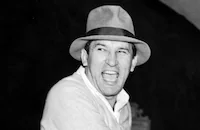
William Dieterle
Cast

William Powell

Bette Davis
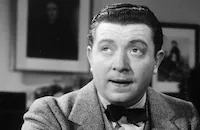
Frank Mchugh

Hugh Herbert
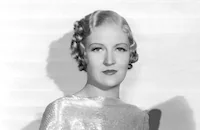
Verree Teasdale

Reginald Owen

Henry O'neill

Phillip Reed
Gordon Westcott

Dorothy Burgess

Etienne Girardot
William Burress

Nella Walker
Spencer Charters
George Humbert
Frank Darien
Harry Beresford
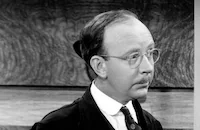
Hobart Cavanaugh
Helen Freeman
Eric Wilton

Arthur Treacher
Eula Guy
Georges Renavent
Adrian Rosley
Jean Perry
Charles Fallon

Armand Kaliz
Andre Cheron
Albert Conti
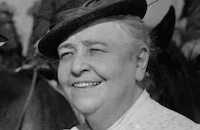
Jane Darwell
Maybelle Palmer
Renee Whitney
Laura Treadwell
Juliet Ware
Crew
Busby Berkeley
Harry Collins
Warren Duff
Carl Erickson
Sammy Fain
Leo F. Forbstein
F. Hugh Herbert
Irving Kahal
Jack Killifer
Stanley Logan
Gene Markey
Jack Okey
Willy Pogany
William Rees
Kathryn Scola

Videos
Movie Clip





Trailer
Hosted Intro
Film Details
Technical Specs

Articles
Fashions of 1934
The plot - as with most Berkeley musicals - was simple: New York fashion "pirates" go to Paris to see the latest models so they can copy them. Along for the ride are a struggling songwriter (Phillip Reed), and a fake Duchess previously known in the States as "Hoboken Mamie" (Verree Teasdale in a role that was very popular in the 1930s and 1940s). William Powell played the charming "pirate" and Bette Davis his assistant, who just happened to be a model. It was pretty routine stuff for the early 1930s when audiences went to the movies to try to escape the grim reality of the Great Depression. Women wanted to see fabulous clothes they could never afford and to get hair-style tips from their favorite stars. Men wanted to see pretty girls. Everyone wanted to be entertained. For this, Warner Brothers employed director Busby Berkeley who would arrange his chorus girls into intricate geometric patterns that changed as the girls danced or swam. What began as a stage musical would suddenly morph into water fountains and swimming pools, and the camera would show what the chorus girls were doing underwater - something that could never have been seen by a real theater audience. It was unrealistic and visually stunning and completely over-the-top. And audiences loved it. But not Bette Davis.
In the fall of 1933 Davis was in the process of a long battle with Warner Brothers' chief Jack Warner. She was fed up with being forced to make movies she considered junk and was begging him to allow her to be loaned out to RKO for Of Human Bondage (1934). Their answer was to put her in Fashions of 1934 and order their top makeup artist, Perc Westmore, to change her look. Davis later remembered in her autobiography The Lonely Life, "I was glamourized beyond recognition. I was made to wear a platinum wig. Makeup had been given the green light with nary a ?may I?? The bossmen were trying to make me into a Greta Garbo. They even dressed the wig like her hair, to say nothing of the false lashes and huge mouth and the slinky clothes." She had a lot to say about the experience - none of it positive. "That kind of thing was for Harlow and Crawford - never for me. In that picture I was frightfully ill at ease, and even felt embarrassed at times." Author Lawrence W. Quirk, in his book Fasten Your Seatbelts wrote, "Davis was also annoyed at having to play onlooker to some protracted funny business between Frank McHugh and Hugh Herbert in the back of a car, and as the scene plays today, she is obviously impatient and annoyed beneath her tight smile and forced attentiveness. 'I've spent so much of my life being second fiddle - will it ever end?' she asked the producer, Henry Blanke...She told Kathryn Dougherty editor of Photoplay at the time: 'I can't get out of these awful ruts. They just won't take me seriously. Look at me in this picture - all done up like a third-rate imitation of the MGM glamour queens. That isn't me. I'll never be a clothes horse or romantic symbol.' Dougherty tried to tell her that she might have more potential in those directions than she thought, and that in some shots photographer William Rees had even made her look quite beautiful. Davis' retort was, 'Beautiful never. Striking, sometimes, if I'm lucky.' She still hated to look at herself on the screen. 'Everyone comes off better than I do!' she lamented to [director William] Dieterle, 'Verree Teasdale has more sophistication and wears clothes better, Powell is center stage in a flattering role, McHugh and Herbert steal all the laughs. I just stand around - like an afterthought.'"
Fashions of 1934 would be the last time Bette Davis was an afterthought and the last time Warner Brothers tried to make her a glamour girl. A few months later, she convinced the studio to let her do Of Human Bondage for which she received a write-in nomination for Best Actress of 1935 though she was not officially nominated by the Academy members.
Producer: Henry Blanke
Director: William Dieterle
Screenplay: F. Hugh Herbert, Carl Erickson, Harry Collins (story), Warren Duff (story)
Cinematography: William Rees
Film Editing: Jack Killifer
Art Direction: Jack Okey, Willy Pogany
Music: Sammy Fain, Heinz Roemheld
Cast: William Powell (Sherwood Nash), Bette Davis (Lynn Mason), Frank McHugh (Snap), Hugh Herbert (Joe Ward), Verree Teasdale (Grand Duchess Alix), Reginald Owen (Oscar Baroque).
BW-78m.
by Lorraine LoBianco
Sources:
Bette Davis "The Lonely Life" and "Mother Goddam"
Lawrence W. Quirk "Fasten Your Seatbelts: The Passionate Life of Bette Davis"

Fashions of 1934
Quotes
Trivia
Eula Gay is in studio records for the role "Cook" but does not appear in the movie.
Preview copies of the film listed Gene Markey and Katharine Scola as writers, but it was announced later they had nothing to do with the film. The Screen Writers' Guild was asked to take action against Warner Bros. for this breach of rules.
Notes
According to AMPAS files, the film's working title was King of Fashion, it was also entitled Fashion Follies of 1934. The video print was titled simply Fashions, but this May have been a special title for television. A Daily Variety news item stated that the Screen Writers' Guild had been asked to take action against Warner Bros. for listing writers Gene Markey and Katherine Scola on the preview copy of the film, and later announcing that Scola and Markey had nothing to do with the film. Modern sources credit Perc Westmore with makeup.
















